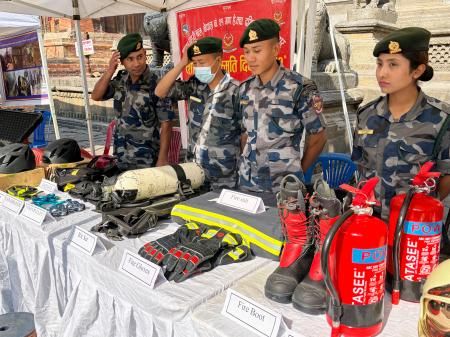Nepal Earthquake: A Decade of Recovery – Progress, Challenges, and the Road Ahead
Ten years ago, on April 25, 2015, a devastating earthquake struck Nepal, claiming thousands of lives and leaving a trail of destruction in its wake. The 7.8 magnitude earthquake and its subsequent aftershocks left a lasting scar on the nation, impacting its infrastructure, economy, and social fabric. This article explores Nepal's journey of recovery over the past decade, highlighting the progress made, the persistent challenges, and the path forward.
The Immediate Aftermath and Initial Relief Efforts
The immediate aftermath of the 2015 Nepal earthquake was chaotic. International aid poured in, with organizations like the UN, Red Cross, and numerous NGOs providing crucial support in search and rescue, medical aid, and the distribution of emergency supplies. However, the sheer scale of the devastation – over 8,000 lives lost and hundreds of thousands displaced – overwhelmed initial relief efforts. Access to remote areas proved particularly challenging, hindering timely delivery of aid.
Key Challenges in the Early Stages:
- Logistical hurdles: Reaching affected communities, particularly those in mountainous regions, posed a significant logistical challenge due to damaged infrastructure and difficult terrain.
- Coordination issues: The sheer number of aid organizations operating simultaneously required effective coordination to avoid duplication and ensure efficient resource allocation.
- Lack of preparedness: The earthquake exposed a critical lack of preparedness for such a large-scale disaster, highlighting the need for improved building codes and disaster management strategies.
Reconstruction and Rebuilding: Progress and Setbacks
The reconstruction phase, while showing some significant progress, has been a long and arduous journey. The government, with the support of international partners, has focused on rebuilding homes, schools, hospitals, and vital infrastructure. However, bureaucratic hurdles, corruption, and funding delays have hampered the pace of reconstruction.
Notable Achievements:
- Housing reconstruction: A significant number of homes have been rebuilt, although challenges remain in completing the task for all affected families. The Nepal government's post-earthquake reconstruction strategy played a key role.
- Improved infrastructure: Roads, bridges, and other crucial infrastructure have been repaired or replaced, improving connectivity and access across the country.
- Enhanced disaster preparedness: Nepal has implemented initiatives to enhance its disaster preparedness, including improved building codes and early warning systems.
Ongoing Challenges:
- Slow progress: The pace of reconstruction has been slower than anticipated, leaving many people still living in temporary shelters or damaged homes.
- Corruption and mismanagement: Allegations of corruption and mismanagement have undermined public trust and hindered the effectiveness of reconstruction efforts.
- Economic impact: The earthquake dealt a severe blow to Nepal's economy, impacting tourism and other key sectors. Recovery from this economic downturn has been slow.
The Psychological Impact and Long-Term Recovery
Beyond the physical damage, the 2015 earthquake had a profound psychological impact on Nepal's population. Many survivors continue to grapple with trauma, loss, and the emotional toll of the disaster. Access to mental health services remains limited, underscoring the need for continued investment in psychosocial support programs.
The Road Ahead: Lessons Learned and Future Strategies
The Nepal earthquake serves as a stark reminder of the devastating consequences of natural disasters and the importance of preparedness, resilience, and effective disaster management. Looking ahead, Nepal needs to prioritize:
- Strengthening building codes and enforcing them strictly.
- Investing in early warning systems and community-based disaster preparedness initiatives.
- Addressing corruption and improving transparency in government spending.
- Providing long-term psychosocial support for survivors.
- Promoting sustainable development to build resilience against future shocks.
The journey to full recovery is far from over. However, through continued international support, strong political will, and the resilience of the Nepalese people, Nepal can build a more resilient and prosperous future. The lessons learned from the past decade will be crucial in navigating the challenges that lie ahead and building a more disaster-resistant nation.
Further Reading:
(Remember to replace the example.com links with actual, relevant URLs.)
